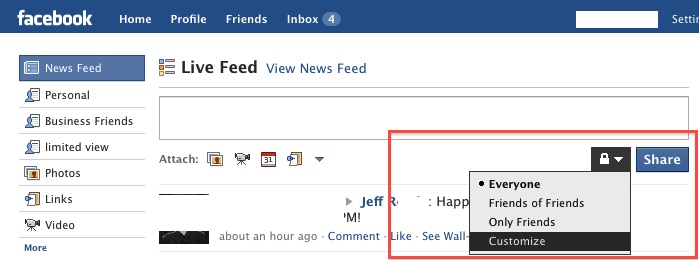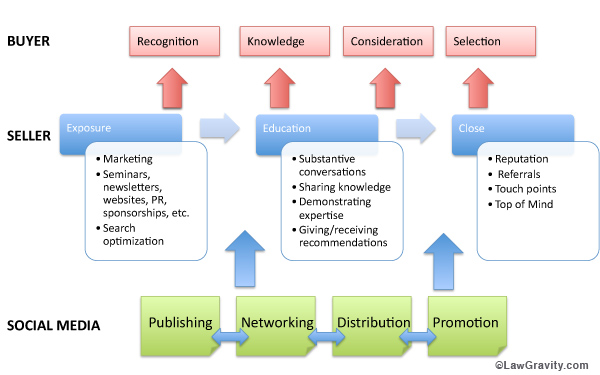Setting up a blog is easy. Whether you do it yourself or hire someone to do it for you, it will probably be the last easy thing you do in your life as a lawyer who blogs. The rest of your life as a lawyer who blogs will revolve around an empty white box—a box longing to be filled with your nifty ideas and brilliant insights. Trouble is, nifty ideas and brilliant insights are not enough. As a practicing lawyer you also must write quality content to reflect the level of quality that represents you. For some (probably most) lawyers who blog, both new and experienced, it can be a real challenge to keep meaningful, nifty, brilliant, and high quality blog content flowing.
So, let’s look more closely at how to write a great blog post. First, if you’re going to blog effectively, you should keep these three basic goals in sight at all times.
Three Goals.
- Write blog content that is attractive to readers.
- Write blog content that others want to share and promote.
- Write blog content that opens connections to new people.
Next step is to add variety.
Style.
Every blogger has his or her own writing style and voice. In most cases this remains consistent throughout the blog. A consistent voice helps readers get to “know” you better. In some cases it can be like hearing the lawyer think out loud. (This can influence business decisions!) But, you’ll probably want to mix up the format of the content you present to keep it interesting for both you and your readers. For example, you may have some posts that simply report pure information while others will go into a longer form of analysis or a how-to.
Fresh format ideas can be found from reading other blogs outside the legal industry and modifying them to meet the criteria of your law firm’s blog policy and your ethical responsibility to the legal profession. In addition, sites like PRO BLOGGER or Copy Blogger offer valuable tips and inspiration for your journey. Meanwhile, here are a few new ideas I compiled from my own journey. (And Here and here are a few old ones too!)
Format.
- Dissect a problem. Is there is a common mistake people make related to your area of practice? Define the problem and describe a few suggested ways to avoid it. Don’t give away the punch line, but give readers enough to take away a practical pointer or two.
- Tell a story. Do you have an instructive experience to tell? Put it in story form and share what you have learned with your readers.
- Teach. Imagine yourself a law professor. Create a “tutorial” series. Break down complex concepts into simple to understand steps. For example, you might explain how venture capital deals are created; the various structures used, the types of individuals involved, sample goals for the individual parties, etc. The key for teaching posts is to keep them simple, use lots of subtitles, sections and even illustrations. (See more on Visuals below)
- Share a statistic. When you come across an interesting statistic, build a blog post around it. This could be as general as labor department data points, trending worldwide mergers by geography, or the number of insurance claims filed annually in the state of [fill in the blank]. While you could include an analysis or connect the dots to some pending legislation in the content copy, often the graphic itself can be the focus of the post, providing a fairly work free entry.
- Promote your clients (and even their customers.) This type of post, when handled appropriately, is sure to generate good will and add some new readers, not to mention the SEO juice you, your client and your client’s customer will get from the links you place within the post. Try an interview style that serves up a story of how one of your client’s customers benefited from their product or services. You could do a friendly review of a new product line, or invite them to do a guest post on a management issue or etc. (Make sure to disclose your relationship.)
- Re-purpose your press releases. Turn your press releases into a news story for your blog. Include links to publications where the story was originally covered and get bonus points.
- Go off topic. Blog readers often find your content via a general web search. That’s why its important to employ smart usage of keywords and tagging. Though your blog is focused on your area of expertise, sometimes throwing in an off topic post can generate new readers and give regular readers something extra. It could be a topic that is related to the legal industry but not necessarily “your” topic. For example, although your blog is about international law, you could write a post about general counsel who blog.
- Ask a non-legal question. Got a burning question? Ask your readers to help you solve it. Again, it’s okay to go off topic from time to time to mix it up. For example, say you are trying to decide between a Kindle, a Nook, or an iPad. You could create a post about your 10 key needs—things you are considering in your decision—and see if you don’t get some feedback.
Visuals.
- Graphs and diagrams. Graphs and diagrams are one of the quickest ways to communicate complex information and add visual interest. A visually simple graphic delivers value that readers will often share with others and even re-blog, helping you build new readers. Some of my favorite sites for ideas about the visualization of information are: InfoGraphics Blog, Flowing Data, and Information is Beautiful.
- Photos and videos. Photos (and videos) are almost always featured in search results on major search engines, so, make sure to give the photo good keywords in the alt tag, caption and post title. Videos work well with teaching posts and can be easily re-purposed on your YouTube channel giving you added exposure. Feeling creative? Robert Thomas, Inversecondemnation.com, takes pictures of funny signs he sees around the court buildings he visits and adds them to his blog and Facebook page.
- Illustrations and cartoons. Bankruptcy Bill is the best example of blogger using this format successfully, though there are probably a few others. His character is used to illustrate relevant challenges businesses are confronted with in bankruptcy matters and also to make complex concepts simple. (You can purchase these cartoons!) You could probably find a local illustrator to hire or if you like snarky stuff check out Hugh McLeod at Gaping Void. (rights reserved)
Persona.
- Humor. While not everyone knows how to be both funny and professional, if you’re one of the lucky ones, injecting a humorous post into the mix can be a nice diversion for you and your readers. You may want to create a specific “category” for these posts like Friday Funnies or Coffee Break.
- Vision. Adding some visionary posts to your blog content mix can set you apart from the rank and file. Instead of just reporting on pending legislation or commenting on high profile cases in the news, with a little imagination you could craft an illustrative scenario that connects the impact such events may have upon a particular industry. While this may take some research and care in keeping your points general, writing this type of post can establish you as a thought leader. Thought leaders are highly valued by blog readers.
- Subtlety. If you typically go around spewing marketing messages, then doing so on your blog will be totally consistent with your persona. Go for it. If you don’t, well, be subtle. In my experience, the competent lawyer blogger does not ever need to “sell” their services. Their content does it for them. Content that is generous—meaning you share experience and expertise fairly freely and often—is more effective than any pitch you might make. Of course, a discrete link from relevant content back to an article on your law firm’s Web site is totally okay and qualifies as subtle in my mind. Other subtle promotional options for your blog would include having a personalized “About Me” page rather than a cut and paste biography from your formal web site. And, as you demonstrate knowledge, good will and authority people will be more receptive to more prominent promotion, so go ahead try including a short bio at the end of each post and test it’s impact on your marketing efforts.
Posts.
On a final note, whatever formats you chose for your posts it’s important to respect your readers’ time. The best posts are written for time-starved people who struggle with information overload. Keep posts concise, well-organized and focused. The inverted triangle style used by journalists can work well for lawyers who blog. The widest part at the top, your introductory paragraph, represents the most substantial, interesting, and important information you want to convey while the tapering lower portion includes material in order of diminishing importance. It is sometimes called a “summary news lead” style. The format is valued because readers can leave the story at any point and understand it, even if they don’t have all the details. Using bullets and bold headlines at the beginning of your paragraphs will also make it easy for readers to skim. Not exactly what you are hoping for after you’ve spent hours writing your post, but the fact is, the most valuable posts, those that meet the criteria in the three basic goals, are typically those that take 60 seconds to read.
Got any suggestions for unique posting formats?
Coming soon from Thomson Reuters, social.lawyer | transforming business development, my new book about business development fundamentals translated for the social Web.





